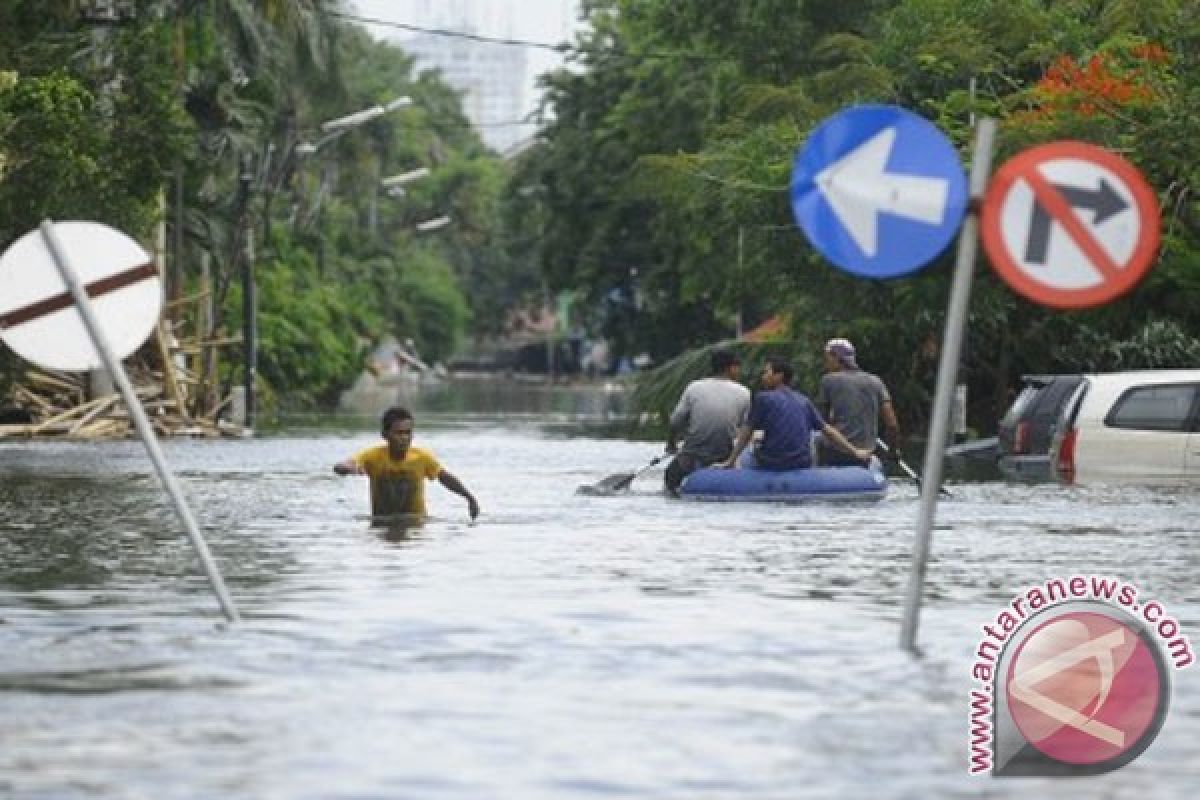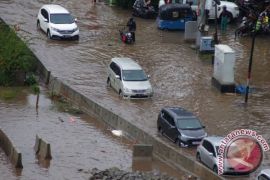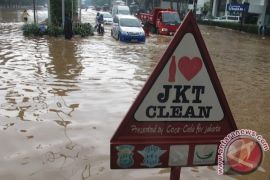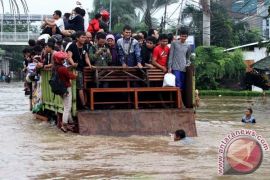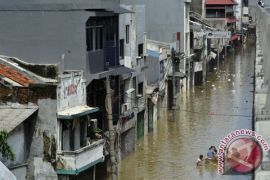men are to blameJakarta (ANTARA News) - Last week`s devastation of Jakarta by floods has rendered the capital city heavy casualties and losses in material.
The city was not only drenched by almost incessant rain but also submerged with the collapse of the Latuharhari dyke, sending water rolling all over the city.
Until yesterday Jan. 23, at least 20 people had been reported dead.
Some were swept by the strong flows but most died of flood related causes such as electrocution and poisonous gases.
There are also people trapped and died in a building basement , which suddenly was filled with big streaming water.
Most of the 20 victims died in locations far away from rivers which overflowed their banks.
The floods caused 100,274 families or 245,119 people languishing soaked with filthy water and forced tens of thousands to evacuate with water surface reaching the roofs of houses in some places.
The water levels have dropped but more than 45,950 people could not yet return to their houses.
The latest figures from the National Disaster Mitigation Agency (BNPB) said that Pluit, Penjaringan, Penjagalan, and Kapuk, in North Jakarta were still submerged until yesterday with water levels still reaching as high as 2 meters.
Those areas remained inundated with water still flowing from the Pluit embankment and the Angke Hilir river.
Coordinating Minister for Public Welfare Agung Laksono said losses in materials reached up to Rp1 trillion or around US$14 million.
The floods which have repeatedly hit Jakarta should serve a good lesson but it seems the government is too quick to let bygones be bygones.
The hardest hit, however, are small people who may have the impact burdening them for the rest of their life.
Rain could not be stopped and the rainfall is especially high in January and February, but it is up to the people especially the government to improve the city`s layout to provide enough outlets for the water.
Surveys show that men are to blame for much of the problem with uncontrolled urbanization, and conversion of forest lands in upstream areas.
Extensive denudation of the Puncak mountain resort area reduces water absorbability of the ground in rainy season, sending almost the entire rain water to the rivers.
As a result the rivers such as Ciliwung overflowed its banks downstream in Jakarta.
The fact that many people building their houses on the riversides resulted in the rivers narrowing and shallower with garbage thrown into the rivers.
Garbage and discarded goods like mattresses, pillows, sofa, cupboards, plastics were seen floating in the rivers.
When heavy rain fell , the shallow rivers could not hold much water and the first victims are the riverside dwellers.
In the past the city authorities had done almost nothing but to dredge the rivers. No attempts have been made to relocate the people, who almost certain to fall victims of floods every year.
The people would not go by themselves abandoning their houses their only property without the government interference.
River dredging is not necessary if there are enough open grounds for the water absorption . The rivers would not silt up if the riverside dwellers are made to understand that it is for their interest not to throw garbage to the rivers.
The Jakarta people look to hope much from their new governor Joko Widodo (Jokowi), the most popular and busiest governor Jakarta ever has .
However, Jokowi`s plan to build multipurpose tunnel would not help much if sedimentation and the habit of throwing garbage to the river could not be stopped.
Revitalization of open grounds to absorb rain waters and the rivers should not continue to be in the pipeline or remain a discourse.
The Jakarta calamity provides a good lesson for all riverside cities in Indonesia. The country has many riverine cities.
In East Java, for example, there are big rivers like Bengawan Solo, Brantas, and Sampean, not smaller than Ciliwung in Jakarta.
The upstream areas of Bengawan Solo, Brantas and Sampean have also been converted into rice fields and residential areas even tourist resorts with big hotels and villa houses.
Many houses have also been built along the river banks and embankments were smashed to build access roads to the residential areas.
Floods, therefore, are more frequent in Bojonegoro, and in other areas.
It is partly because the government is not consistent its policy to protect the environment.
(AS/O001)
*) Dr. Amien Widodo is chairman of the Study on Earth, Disasters and Climate Change of the Surabaya Institute of Technology (ITS)
Reporter: dr. Amien Widodo* / Alberth Sa
Editor: Ella Syafputri
Copyright © ANTARA 2013
